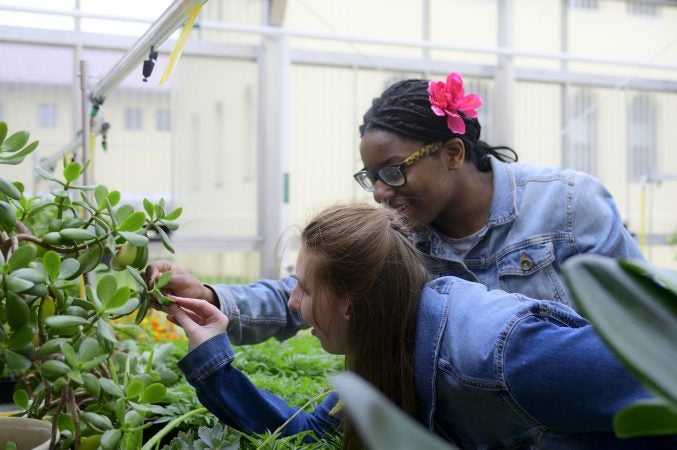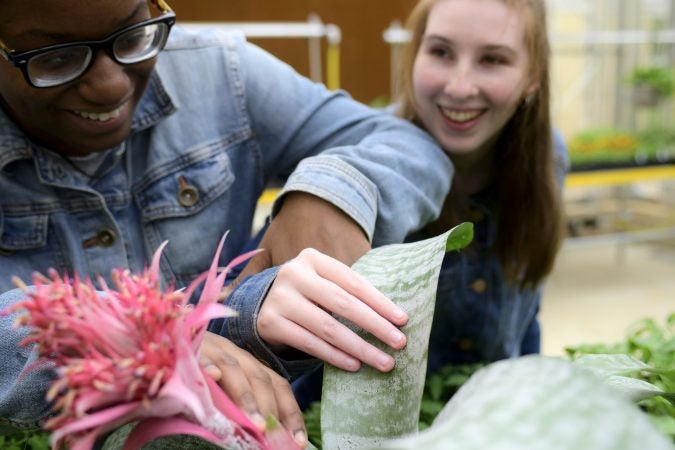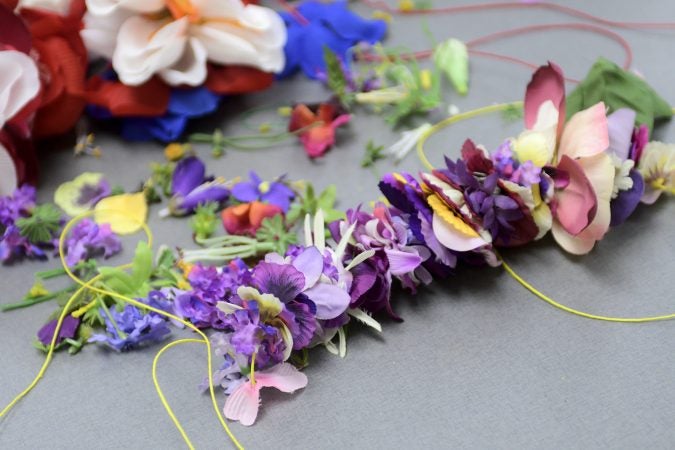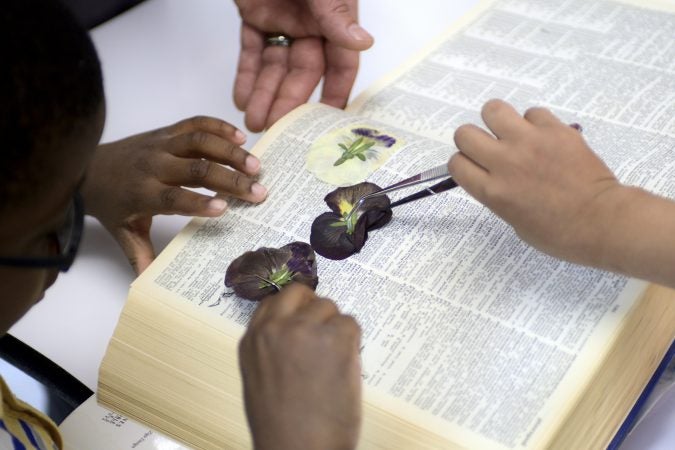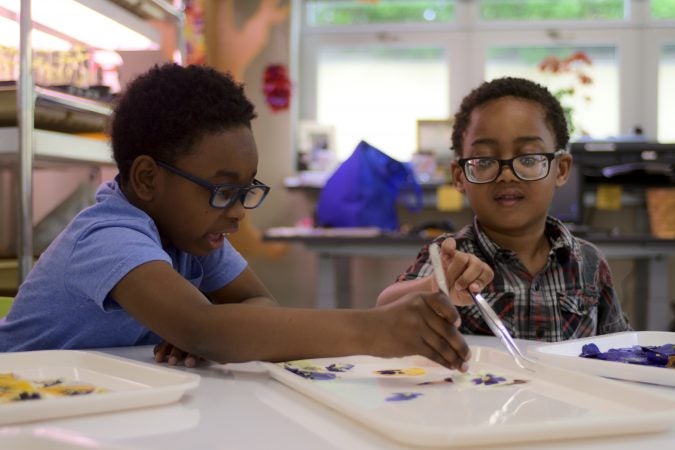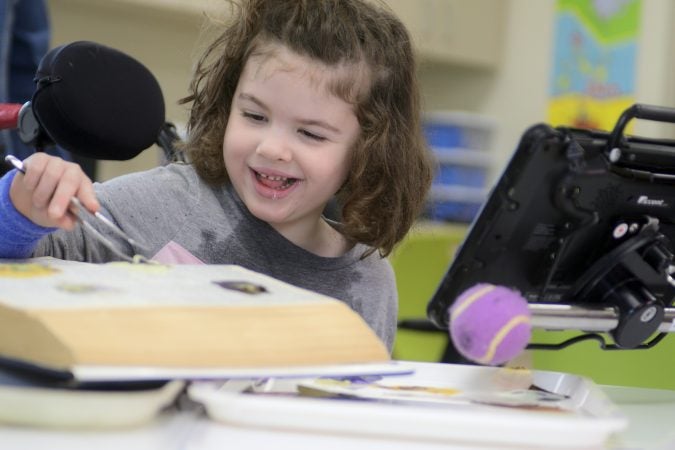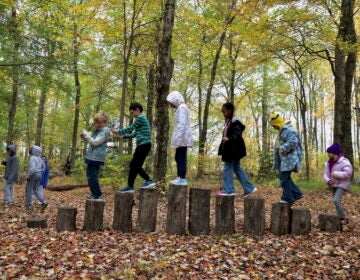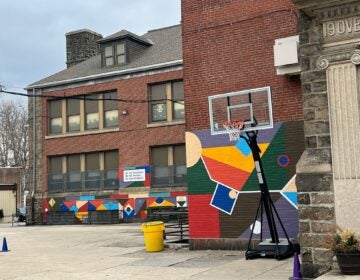New horticultural center at Overbrook School for the Blind seeds a connection to nature
Students at the West Philadelphia campus will be able to grow flowers, fruits and vegetables from seed, as well as add to their skills and experiences.
Listen 2:01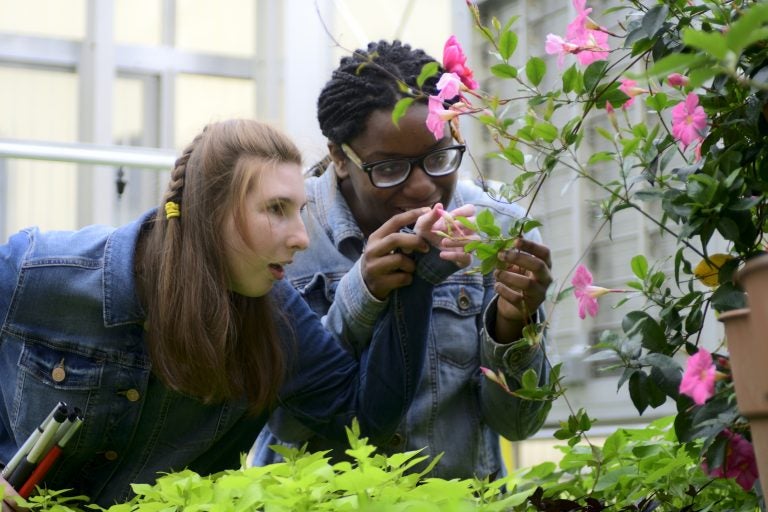
Ashlee Preston, 19, and Shamirah Brown, 18, explore plants at the new horticulture center for students who are blind, visually impaired or have other disabilities at the Overbrook School of the Blind, on Tuesday. (Bastiaan Slabbers for WHYY)
When we think about flowers, most of us contemplate colors or scents. But for Overbrook School for the Blind students Shamirah Brown, 18, and Ashlee Preston, 19, it’s also about texture.
Brown and Preston both say they can see some colors. But when they touch and smell things, they say, they can visualize them better.
“This is super pretty, look, right here,” Brown said, bringing Preston’s hand to a flower. “It’s an orange and a yellow combined.”
“Ah … that is pretty,” Preston said.
They were walking around about 4,000 baby plants in their school’s brand-new horticultural and education center, named in honor of M. Christine Murphy, a school trustee who died in 2011.
Founded in 1832, the Pennsylvania Institution for the Instruction of the Blind was one of the first such schools in the United States. In 1946, it relocated to its current campus in West Philadelphia and was renamed Overbrook School for the Blind. Today, it serves more than 200 students from 5 to 21 years old, and includes classrooms, a gymnasium, bowling alleys, a world-class swimming pool, a museum — and, starting Friday, a greenhouse.
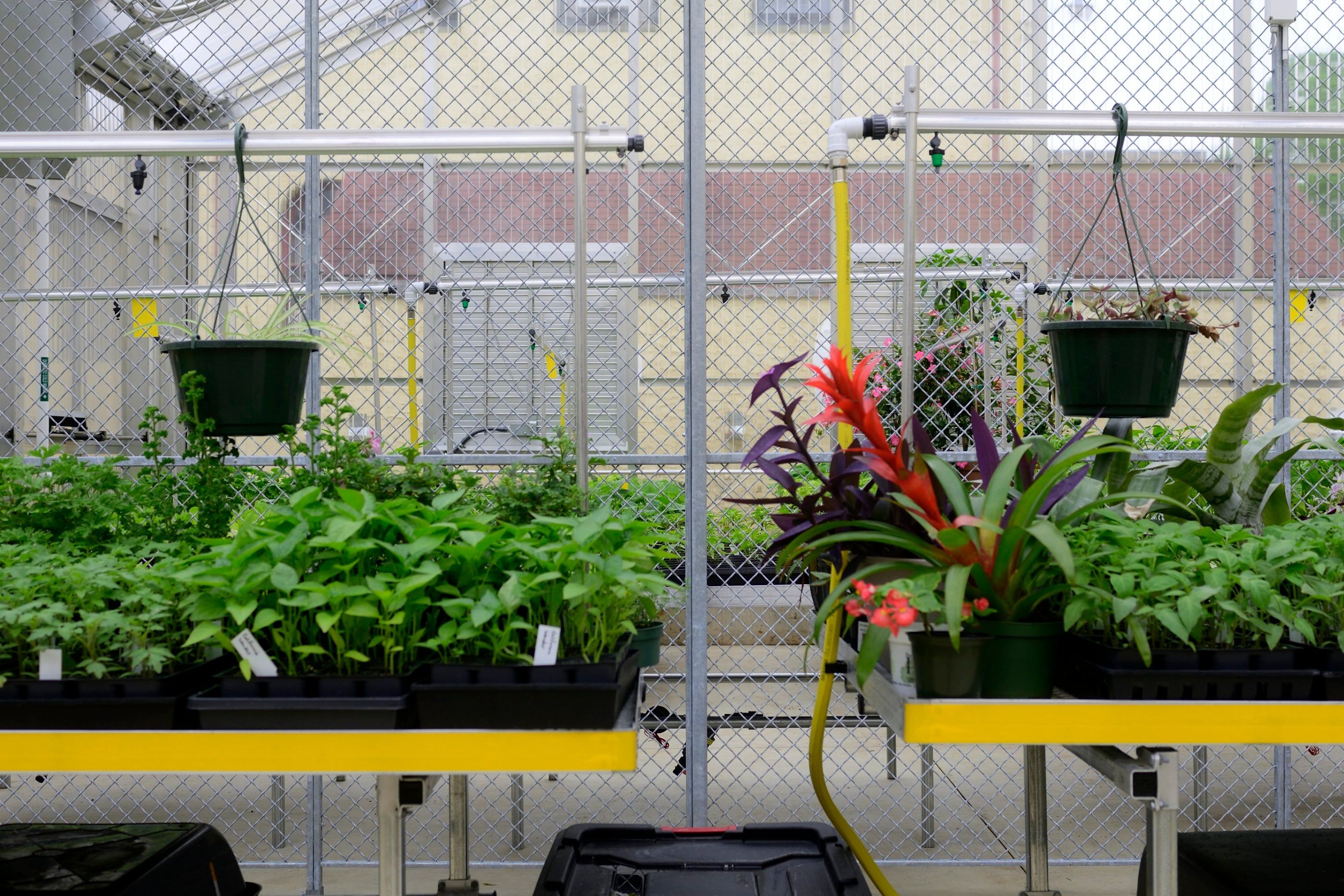
Earlier this week, as they led a tour of the greenhouse, Brown and Preston held onto each other. They leaned toward a basil plant.
“This smells like … mmm … What do you smell?” said Brown, who lives in Germantown.
“I don’t know,” said Preston, who comes to school from South Jersey.
“It smells like sweet, but kinda with a spice to it,” Brown said.
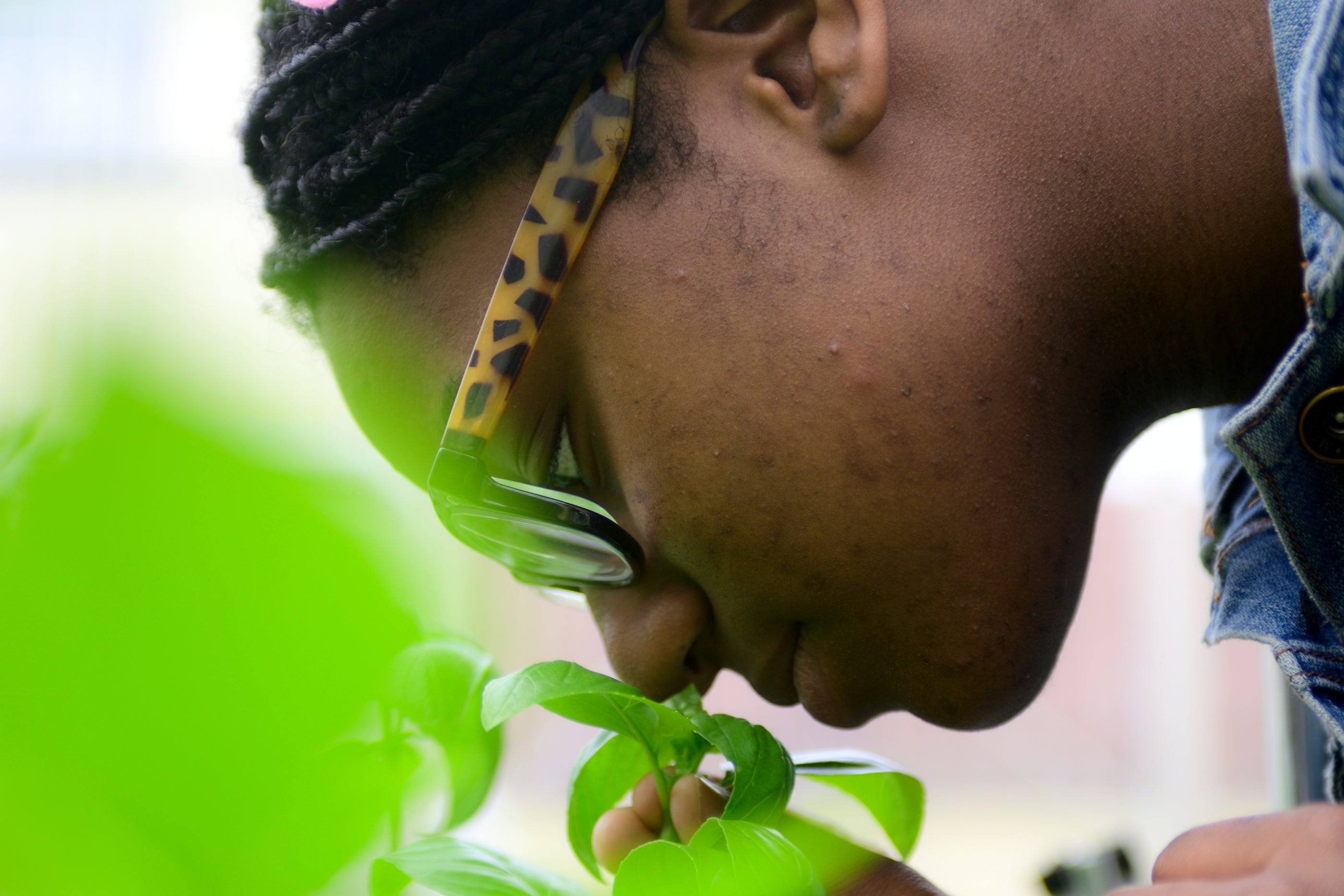
Next to the greenhouse, horticultural therapist Rich Matteo was teaching 5-year-olds how to dry flowers to make bookmarks. The kids say they like flowers because they are pretty, and they can smell them.
“Gardening can be a therapeutic activity,” Matteo said. “It’s physical, you’re moving, so you’re releasing endorphins. But also having that connection with nature is therapeutic.”
Everything in the greenhouse was started from seed. Matteo said about 50 students have planted, propagated or transplanted starters, depending on their level of ability.
Jackie Brennan, the school’s superintendent, said they visited horticultural-therapy programs all over the country to come up with something that worked for their students. About 25% are considered blind, 75% have low vision, and some have other physical challenges, said Brennan. Teachers have high hopes for the new horticultural program.
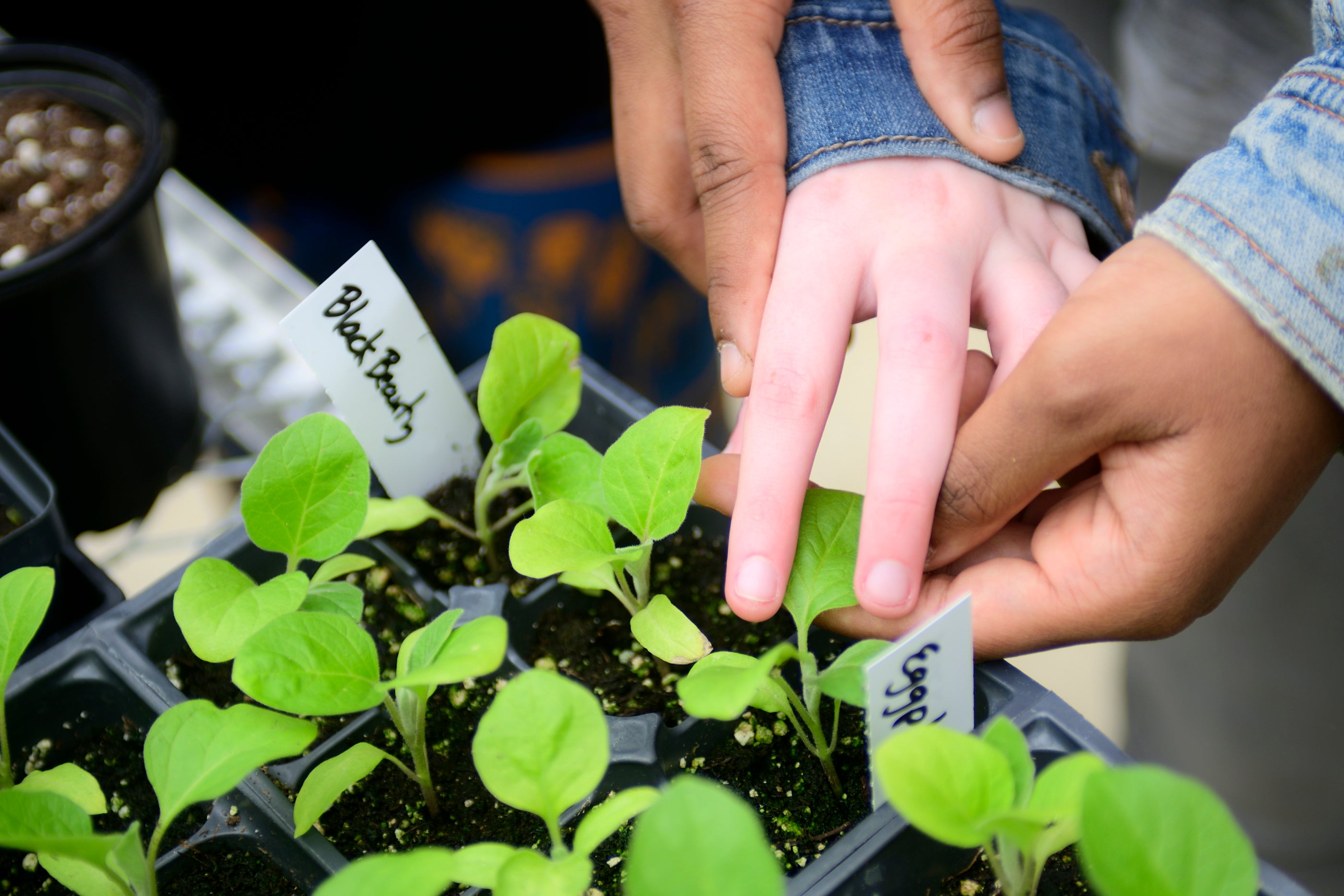
“From pure pleasure, to just the sensory experience of working with plants, to [being] therapeutic for students … maybe learning how to reach with their arms, and they can reach to get the soil and put it in the pot; to commercial for students learning to grow crops and plants for businesses; to potentially work in a greenhouse and get job experience; for personal gardening, for lifelong skills,” Brennan said. “The goals are many.”
The 1,780-square-foot adaptive and accessible building has received Leadership in Energy and Environmental Design silver certification, uses solar energy, and reuses rainwater. The $1 million investment was made possible by a contribution from Sid Rosenblatt, who is an Overbrook School trustee and husband of the late Murphy, and a grant from Green Mountain Energy Sun Club. Students at the Overbrook School for the Blind pay no tuition.
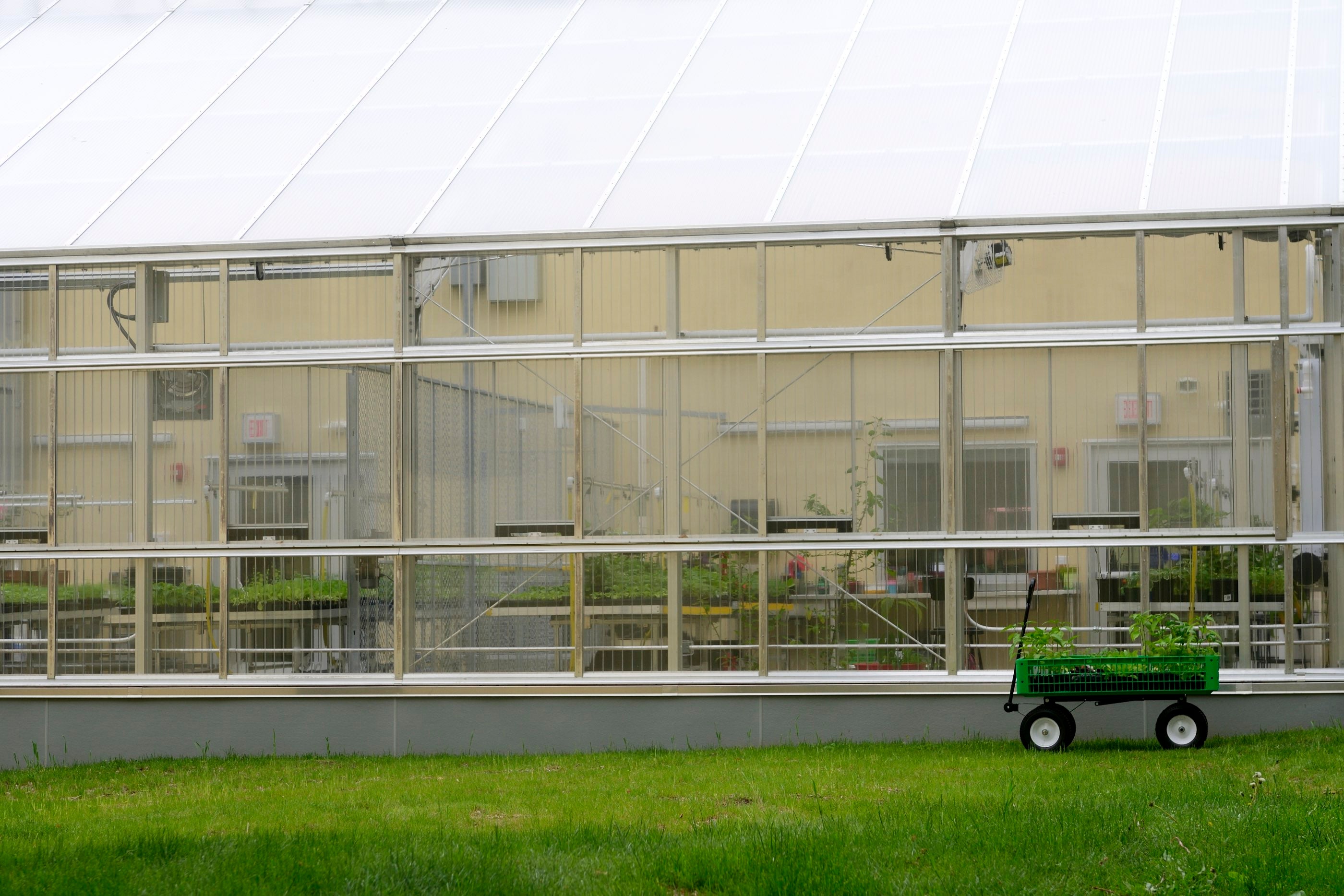
Brown and Preston’s teacher Tony Le said the greenhouse will help him teach his students to eat healthy foods.
“They will learn where vegetables and flowers are coming from,” Le said. “A lot of this fruit and food is going to end up in our lunches and our breakfast and our dinners here. I’m pretty sure they will enjoy growing them and eating them.”
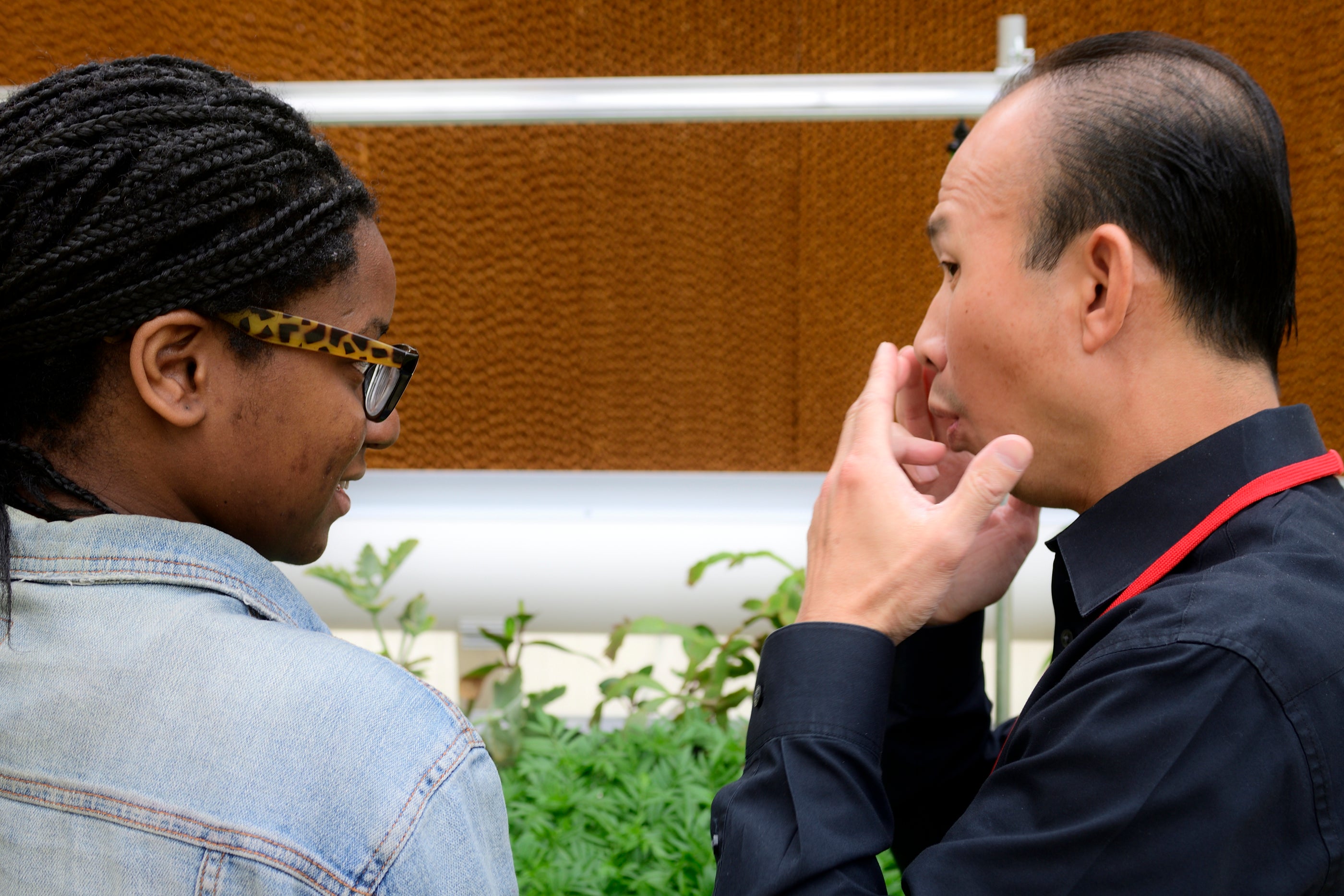
Brown said she’s a picky eater. She’s has never had eggplant, cauliflower, squash, berries or chiles. And she doesn’t like tomatoes. But she’s open to changing that.
“I’m willing to eat anything that grows in the garden just to give it a try,” she said, adding that she’s never grown, picked or eaten a tomato. “So that’s what I’m looking forward [to].”

Vegetables and fruits started in the greenhouse will be transplanted to the school’s raised beds, and from there will go into the students’ meals. The flowers will be planted on the school’s campus. And any excess produce will be donated to people in need.
WHYY is your source for fact-based, in-depth journalism and information. As a nonprofit organization, we rely on financial support from readers like you. Please give today.


